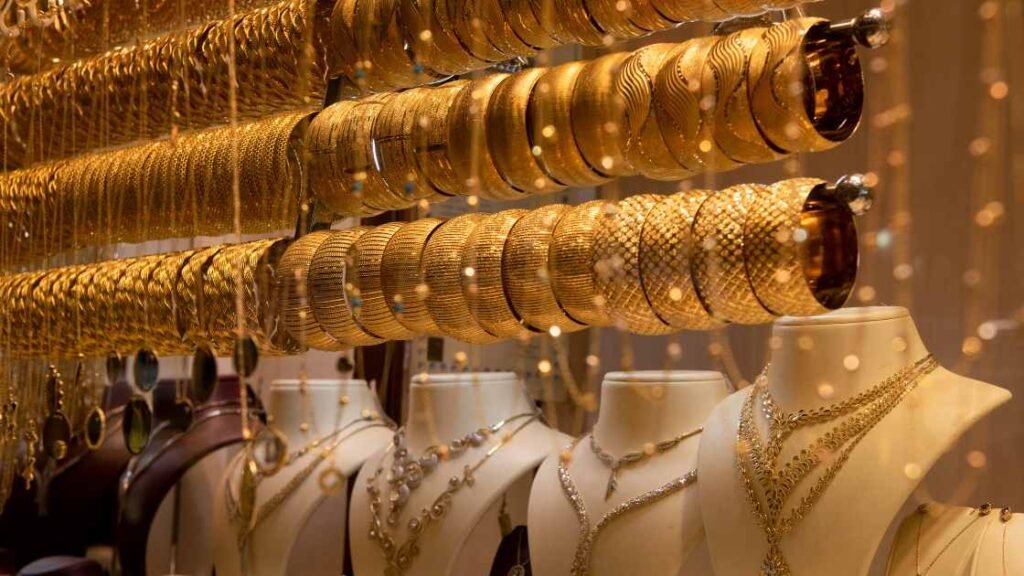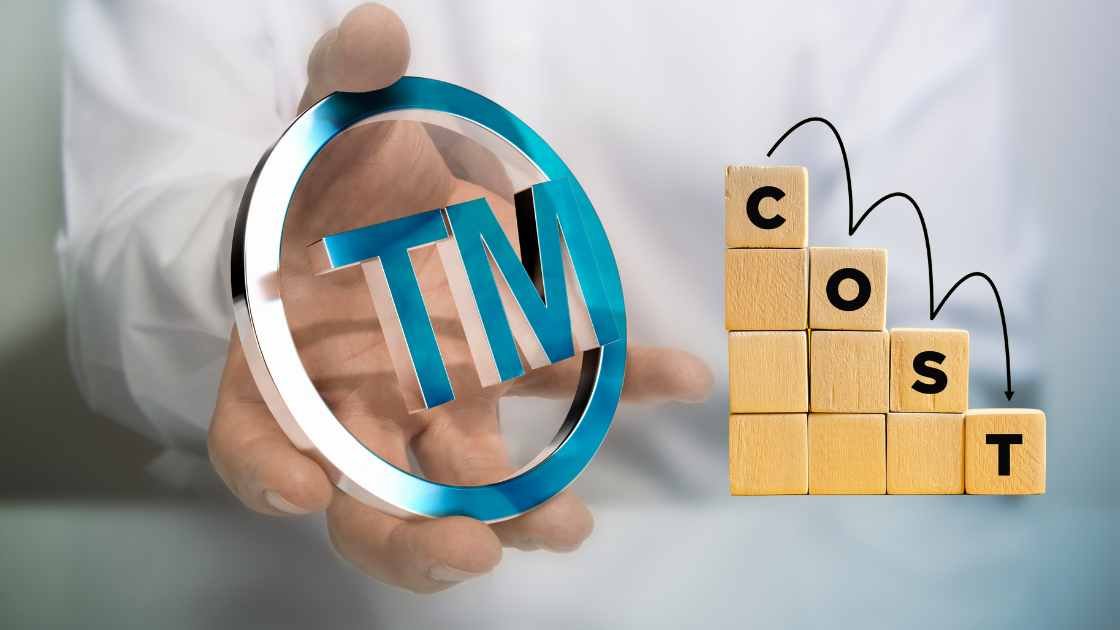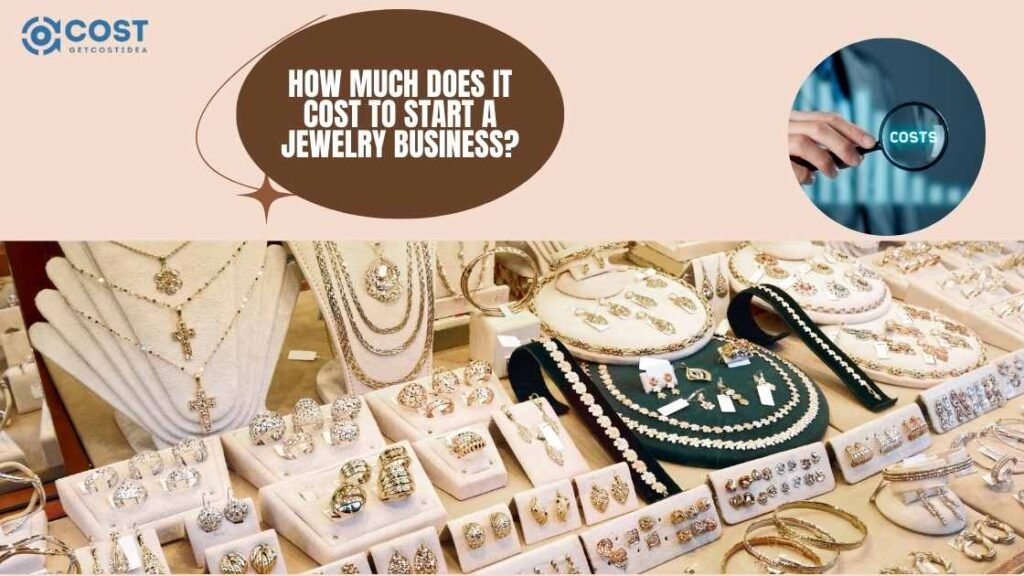The cost to start a jewelry business can range from $100 to $100,000. Initial expenses vary based on scale, materials, and marketing.
Embarking on the journey of starting a jewelry business involves delving into the intricacies of both the artistic and business facets of the industry. Entrepreneurs venturing into this domain need to meticulously assess various expenses, including raw materials, workshop tools, and branding.
The pivotal question one must ponder is, “How Much Does It Cost to Start a Jewelry Business?” The answer to this question depends on several factors, such as the quality and sourcing of materials.
For those opting for a home-based, handcrafted jewelry business, the financial commitment may be relatively modest, necessitating only a basic investment in tools and supplies. This accessible entry point caters to individuals with a more constrained budget.

Conversely, individuals targeting the high-end market with precious metals and gemstones must be prepared for substantial initial expenditures on materials, advanced equipment, and potentially establishing a physical store.
Crafting a comprehensive financial plan is indispensable, encompassing aspects like production, operation, and marketing costs, including strategies such as digital presence, social media advertising, and professional photography.
A meticulous and considerate budget is the linchpin for a successful launch into the world of jewelry business.
Initial Costs Breakdown
Starting a jewelry business involves several upfront investments. You must consider a range of costs. Let’s break down the initial expenses. This ensures a clear financial plan.
Material Expenses
Quality materials drive jewelry businesses. Your choices affect costs.
- Gemstones: Prices vary based on type and quality.
- Metal: Options like gold and silver cost more.
- Findings: Clasps and hooks are essential; buy in bulk to save.
Plan your designs. Choose materials wisely. Keep an eye on market rates.
Equipment And Tools
Special tools are needed to craft jewelry. These are some common items.
| Tool/Equipment | Approx. Cost |
|---|---|
| Jeweler’s Bench | $200-$1000 |
| Polishing Machine | $100-$500 |
| Engraving tool | $50-$300 |
Start with basic tools. Expand as your business grows.
Workspace And Utilities
A well-lit, safe workspace is vital. Include utility costs too.
Workspace Options:
- Home-based studio to cut down on rent.
- Renting a small studio for a professional setting.
Utilities:
- Electricity for lighting and equipment.
- Water for cleaning pieces and workspace.
- Internet for business communications and sales.
Keep overhead low. Optimize space for efficiency. Monitor utility usage.
Licensing And Insurance

Licensing and insurance are vital pieces in the puzzle when starting a jewelry business. They protect your venture legally and financially. Let’s break down the associated costs to ensure your shimmering startup isn’t tarnished by unexpected expenses.
Business Registration Fees
Registering your business is the first official step. The cost can vary widely based on the business structure and location. Here’s a glance at what to expect:
| Business Structure | Registration Cost |
|---|---|
| Sole proprietorship | Low |
| LLC | Higher |
| Corporation | Highest |
Insurance Policies
Insurance safeguards your business from unforeseen events. Common policies include:
- General liability insurance: guards against everyday risks.
- Product liability insurance: is important if you manufacture jewelry.
- Professional liability insurance: covers issues from services offered.
Costs vary, so get quotes from multiple insurers.
Trademark Costs

A trademark protects your brand’s name and logo. It’s an investment in your brand’s identity. Here’s what you should know:
- Search fees: Ensure your brand isn’t already taken.
- Application fees: The cost to file for a trademark.
- Attorney fees: If you hire a lawyer for the process.
Expect to pay several hundred to a few thousand dollars.
Crafting Your Brand
Crafting Your Brand is a critical step in the journey to launching a successful jewelry business. Your brand is the heart and soul of your enterprise. It’s the first impression customers have and it’s what sets you apart in a crowded marketplace.
Focusing on Logo and Brand Design, Marketing and Advertising, and Website and E-commerce setup will ensure your business stands out and reaches your target audience effectively.
Logo And Brand Design
Your logo is your brand’s visual identity. Getting it right is vital. Professional logo design can range from $250 to $2,500. Prices vary based on the designer’s experience and the complexity of your request. For startups, cost-effective options include freelance platforms. But remember, a unique and memorable logo will help customers recognize your business instantly.
Marketing And Advertising
Effective marketing and advertising are essential for your jewelry business to thrive. Initial costs can be between $500 and $5,000, depending on the scale. Here’s a breakdown of potential expenses:
- Business Cards: Starting at $20
- Brochures/Flyers: Approximately $40
- Social Media Ads: Budgets can start at $200 per month
Plan campaigns that tell your brand’s story and showcase your jewelry’s uniqueness.
Website And E-commerce Set-up
Today, an online presence is non-negotiable. Setting up a website and an e-commerce platform typically involves these costs:
| Expense | Cost |
|---|---|
| Domain Name | $10 – $50 per year |
| Hosting | $50 – $200 annually |
| Website Builder/E-commerce Platform | $20 – $300 per month |
Invest in a user-friendly, appealing site. It’s your digital storefront and can greatly impact sales.
Ongoing Operating Expenses
After launching a jewelry business, consistent costs occur. These costs keep the business running smoothly. Think of them as the fuel for your business engine. They cover restocking materials, paying workers, and getting your products to customers. Let’s explore these costs.
Raw Materials Restocking
Quality materials ensure beautiful jewelry. Your inventory is key to continuous production. Costs vary by materials like gold, silver, or gemstones. Regular restocking is crucial for your collection to remain fresh and exciting.
- Budget for fluctuations in material costs.
- Consider bulk purchases for discounted prices.
Labor And Outsourcing
Skilled artisans turn materials into stunning pieces. Labor costs directly affect your product’s price. You might also outsource certain tasks. This could involve marketing professionals or freelance designers.
- Wages or salaries for in-house artisans or sales staff.
- Fees for outsourced services, such as graphic design.
Sales And Distribution
Once you have your jewelry ready, you need to get it to customers. Sales channels influence distribution costs. Online sales might require shipping, while physical stores incur operational expenses.
| Sales Channel | Typical Costs |
|---|---|
| Online Store | Website maintenance, shipping, payment processing fees |
| Retail Location | Rent, utilities, staff wages |
Explore both online and offline options to balance the costs efficiently.
Funding And Financial Planning

Embarking on the journey to start a jewelry business is thrilling. Yet, careful planning around funding and financial management is key. Knowing the costs and how to manage them will set a solid foundation for success.
Let’s explore the various avenues for raising startup capital, strategies for budgeting effectively, and conducting break-even analysis – all critical for a prosperous jewelry venture.
Startup Capital Sources
Securing funds is a crucial first step in turning your jewelry business dream into reality. Here are some primary sources:
- Personal Savings: Gauge your financial capacity and consider investing your savings.
- Family and Friends: Reach out to your inner circle for possible investment.
- Business Loans: Approach banks or credit unions for small business loan options.
- Angel Investors: Look for individuals interested in funding small startups for equity.
- Crowdfunding: Utilize platforms like Kickstarter to raise funds from a wider audience.
Budgeting For Sustainability
Create a detailed budget to track and manage your costs:
- Estimate initial expenses like materials, equipment, and marketing.
- Factor in ongoing costs such as rent, utilities, and wages.
- Set aside a contingency fund for unexpected occurrences.
Use tools like spreadsheets or accounting software to keep your budget organized. Remember to review and adjust your budget as your business evolves.
Break-even Analysis
To measure when your jewelry business will start making a profit, perform a break-even analysis. Follow these steps:
- Calculate total fixed costs (rent, salaries, utilities).
- Add up variable costs per unit (materials, production).
- Identify the selling price per unit of your jewelry.
- Calculate the number of units you need to sell to cover all costs.
This analysis provides a clear goal for sales and ensures informed pricing decisions. Aim to reach your break-even point within a viable timeline to ensure long-term sustainability.
Navigating The Competitive Landscape
Starting a jewelry business can be a glittering prospect. Yet, the sparkle of potential success also comes with a competitive edge. Jewelers must navigate a marketplace teeming with rivals. Knowledge and strategy become your treasures here. Uncover costs not only in dollars but also in research and marketing mastery.
Market Research Investment
Before diving into the jewelry business, thorough market research is critical. It guides your strategy and helps you stand out. This investment entails understanding industry trends, customer preferences, and the game plans of competitors. Wise spending in this area can range from purchasing industry reports to engaging marketing experts. Costs vary widely but expect to invest several hundred to a few thousand dollars.
- Industry reports: $100 – $5,000
- Focus groups: $1,000 – $5,000
- Online survey tools: $20 – $100/month
Competitive Pricing Strategies
Skillful pricing can place you ahead of the competition. It involves setting prices that attract customers while retaining a profit. Consider the cost of materials, production, and your desired profit margin. Be aware that some pricing strategies might require software or consultant expertise, which can add to your initial costs.
| Cost Item | Estimated Cost |
|---|---|
| Pricing software | $29 – $500/month |
| Consultation fees | $500 – $5,000 |
Differentiation And Positioning
Standing out in a crowded market is key. Your business must offer something unique. This process, called differentiation, can be through design, materials, or customer experience. Positioning your brand effectively will require branding efforts and possibly hiring a designer or branding agency. Establishing a strong, differentiated presence can help attract customers who are willing to pay a premium for your unique offerings.
- Brand development: $2,000 – $10,000
- Graphic designer: $500 – $5,000
- Online store setup: $500 – $3,000
Frequently Asked Questions Of How Much Does It Cost To Start A Jewelry Business
How Much Does It Cost To Start A Small Jewelry Business?
Starting a small jewelry business can cost between $200 to $10,000. The amount varies based on location, materials, and marketing.
How Profitable Is Jewelry Business?
The jewelry business can be highly profitable with good margins, often ranging from 25-75%. Success depends on factors like quality, brand recognition, and effective marketing strategies.
Do You Need A Lot Of Money To Start A Jewelry Business?
No, starting a jewelry business doesn’t necessarily require a large capital. Options like dropshipping or handmade jewelry can begin with minimal investment.
How Do I Start A Small Jewelry Business From Home?
To start a small jewelry business from home, conduct market research and identify your niche. Create a business plan, register your business, and select a catchy name. Invest in essential tools and materials, and set up a dedicated workspace. Lastly, market your creations online and through social media.
Conclusion
Starting a jewelry business requires a careful examination of costs. The initial investment can vary widely—from a few hundred to many thousands, depending on scale and materials. Smart budgeting and strategic planning can pave the way for a sparkling future in the jewelry market.
Prioritize necessary expenses and prepare for the unexpected to ensure a shining start for your new venture.



1 thought on “How Much Does It Cost to Start a Jewelry Business?”
Pingback: How Much Does A Consumer Protection Lawyer Cost?